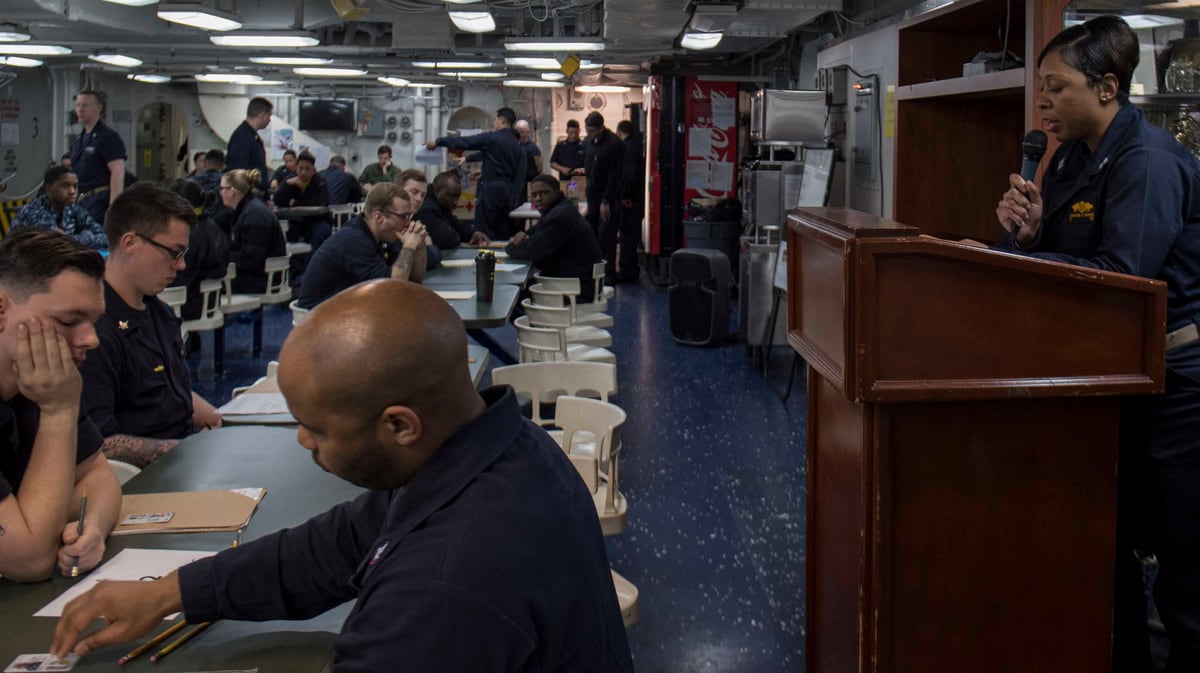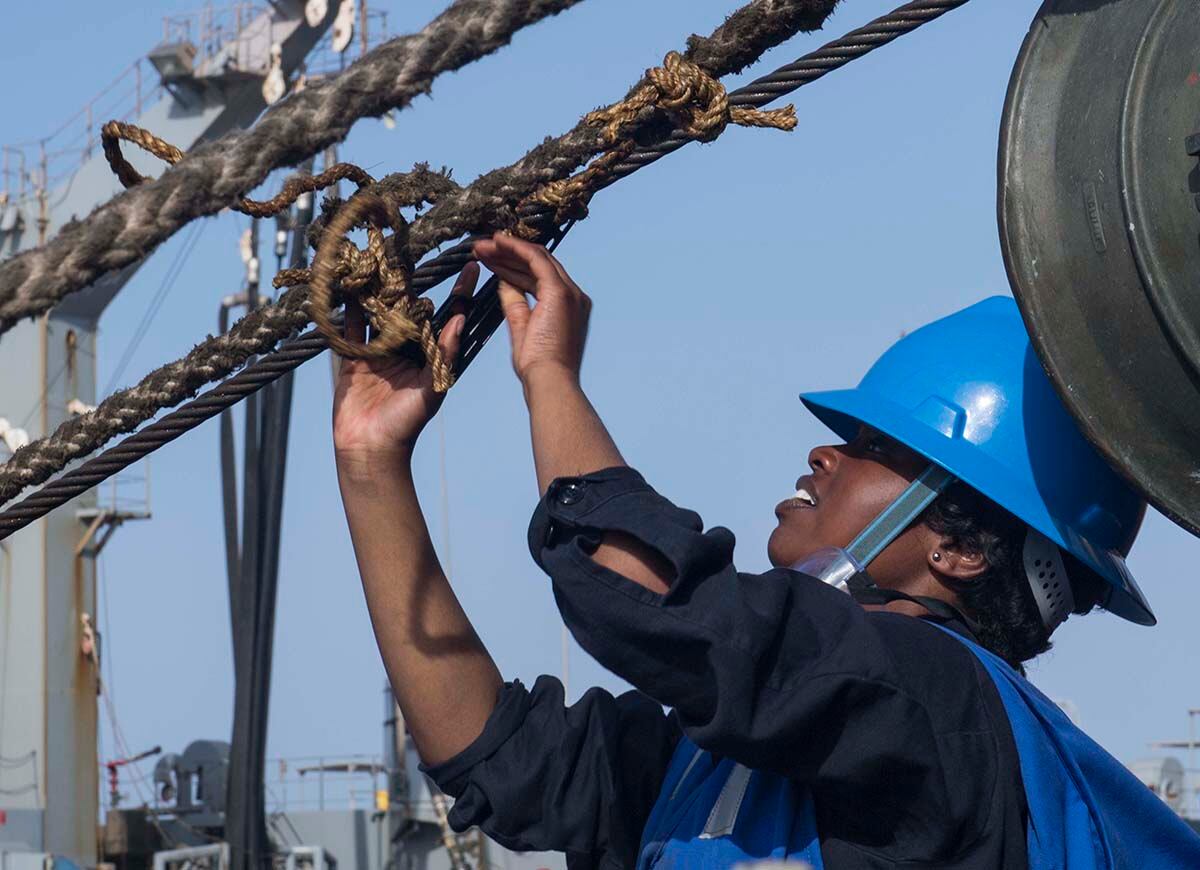Navy personnel officials are pushing ahead on plans to hike the number of no-test, command-level advancements this year.
Officially known as the “Meritorious Advancement Program,” or MAP, the program has steadily increased in scope since it was plucked from the personnel system scrap heap in 2015. MAP boosts comprised 15 percent of all E-1 to E-6 advancements in 2018 and officials want that share to rise this year to 20 percent.
They also vow to align the two separate meritorious advancement “seasons,” placing MAP on schedule that’s similar to the traditional twice-yearly advancement cycles.
“We will take a substantial step forward in [calendar year] 19 to expand the ability of the command triad to directly reward more top performing talent,” Vice Adm. Bob Burke wrote in NavAdmin message 031/19, released Friday.
“MAP is intended to empower commanding officers and their command triads to identify and advance the most talented, experienced and proficient sailors within their commands based on first-hand demonstrated performance and ability.”
This year’s tweaks stem from a series of recommendations delivered by a “strategic meritorious advancement working group” comprised of senior enlisted leaders across the fleet, Burke wrote. Their analysis was culled from lessons learned after the 2018 advancement season ended in early autumn.
The group urged officials to give commands “as much latitude and flexibility as possible,” in making their advancement choices.
RELATED

The Navy’s decision to create two MAP seasons that overlap with the pair of traditional spring and fall advancement cycles is another way to “make clear the intent of MAP to select and reward the right (sailors) with MAP quotas,” Burke wrote.
The first season will begin on March 1 and end on April 30. The second is slated to start on Sept. 1 and end on Oct. 31.
Active-duty sailors competing for advancement to E-4 through E-6 sit each year in March and September to take their exams.
“This change will require command triads to select their most-qualified (sailors) for MAP, without regard to the [exam cycle] results,” Burke wrote.
Since 2015, when the program was revamped from the old Command Advancement Program to MAP, Navy officials have stressed the “meritorious” nature of the advancements, urging commanders to boost their best sailors, even if they believe they will advance on the next exam cycle.
MAP advancements are effective the day that they’re awarded, allowing sailors to get paid for the new grade from that day forward. They also begin accruing time in grade to apply to their next advancements.
With the traditional exam cycle, sailors often are “frocked" — given the rank and privileges up front — but without the reward of a pay raise or additional time in grade. That gets spread out over a six-month span, depending on how sailors scored during the cycle.
Across the two seasons this year, the Navy will have 9,360 no-test advancement quotas, an increase of 2,348 more advancements than during the single 2018 season. That total will be distributed with half available during each MAP season.
That means there will be 4,095 quotas at E-4; 3,538 at E-5; and 1,727 at E-6.
RELATED

Burke told Navy Times last year that he’s comfortable with MAP advancements rising to roughly 25 percent of the annual total, suggesting that the sea service might expand the no-test quotas in the coming years.
The expanded two seasons for advancement will change the redistribution period, when commands can turn in unused quotas or request more advancements from that Navy-wide pool. Now those quotas will be added to totals available for the spring advancement exam cycle.
The Navy annually announces exam advancements just before Memorial Day for the spring cycle and Thanksgiving for the autumn cycle.
Burke urged commanders not to take a “use it or lose it” mentality with their MAP quotas, which he said will defeat the purpose of the advancements in the same way that abuse doomed the old program. He insisted that returning quotas won’t raise the risk of commands losing advancement opportunities in the future.
“These quotas should not be given away," Burke wrote. "No command should feel compelled to utilize all their quotas and no sailor should be advanced before the command feels they have the expertise, experience, maturity, leadership and judgement required at the next higher pay grade.”
Mark D. Faram is a former reporter for Navy Times. He was a senior writer covering personnel, cultural and historical issues. A nine-year active duty Navy veteran, Faram served from 1978 to 1987 as a Navy Diver and photographer.
